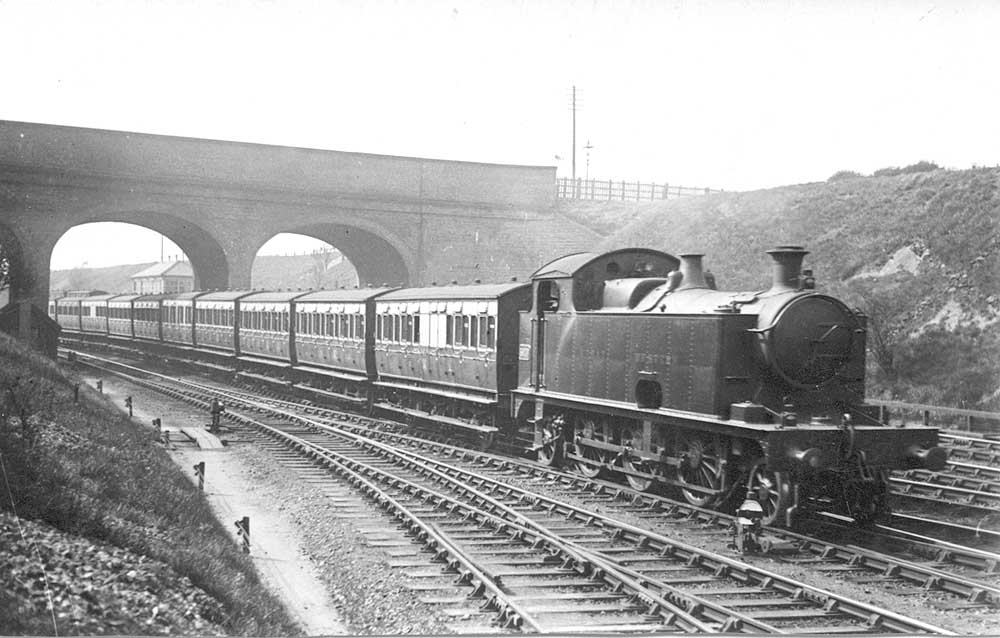|
|
 |
 |
|
GWR Route: Banbury to Wolverhampton
Handsworth Junction: gwrhs1947
 |
Great Western Railway 39xx class 2-6-2T No 3909 is passing
under Halfords Lane Bridge on the up relief line in the mid 1920s. Handsworth
Junction is the other side of the bridge adjacent to the Signal Box. The train
is comprises a long rake of six-wheel coaches travelling as an empty carriage
stock working (denoted by lamp headcode D – see
headcodes). No 3909 was built as Dean Goods 0-6-0 tender
locomotive No 2507 in November 1896 and converted to a prairie tank locomotive
in December 1907. At this time there was a demand for more powerful suburban
locomotives especially in Birmingham where the North Warwickshire Line was soon
to open. With the Swindon Works machine shops operating at full capacity, these
rebuilds used all the principle parts of twenty surplus Dean Goods locomotives
(all from lot 104, built in 1896) on new frames, with a Churchward standard No
5 boiler and two 750 gallon side tanks to produce these unusual looking
conversions. The locomotive had inside cylinders and the large unsightly oval
hole in the side tank gave access to the motion for oiling. The boiler operated
at a pressure of 200 lbs producing a tractive effort at 85% of 20,155 lb and
these locomotives were classified in power group B. The maximum axle weight of
17 tons 4 cwt restricted the locomotives to main lines and some branch lines
(colour code – Blue). All the conversions were built initially without any
superheating, but this were fitted to No 3909 in July 1917. Other modifications
included; fitting top-feed apparatus and enlarging the rear bunker to increase
coal capacity (circa 1920). These locomotives were designed for the Birmingham
suburban traffic and No 3909 was initially allocated to Tyseley shed (TYS),
remaining there until displaced by new 2-6-2T locomotives in the late 1920s.
After moving away from Birmingham, No 3909 was finally withdrawn from Barry
shed (BRY) in south Wales in October 1930.
The first coach is a four compartment, centre brake third,
without a guard’s ducket (Diagram T39). These coaches were thirty-one feet
long with three axles at nine foot, six inch centres. They had a single arc
roof. One hundred and fifty-five were built between 1875 and 1883. Originally
the coaches would have been built with an external look-out (ducket) for the
guard (Diagram T38), but these duckets were removed in the 1920s. The three
coaches immediately following this brake third are all five compartment coaches
(probably third class coaches to Diagram S3). These were similar to the Diagram
T39 design with a single arc roof and with three axles at nine foot six inch
centres, but were slightly shorter at twenty-eight feet long. Approximately six
hundred and forty-two of this coach design were built between 1872 and 1884.
The brown and cream coach livery seen here was reintroduced to the Great
Western Railway’s coaching stock in 1922.
An original photograph by Henry L Salmon
Robert Ferris
 back back

|
|
|
